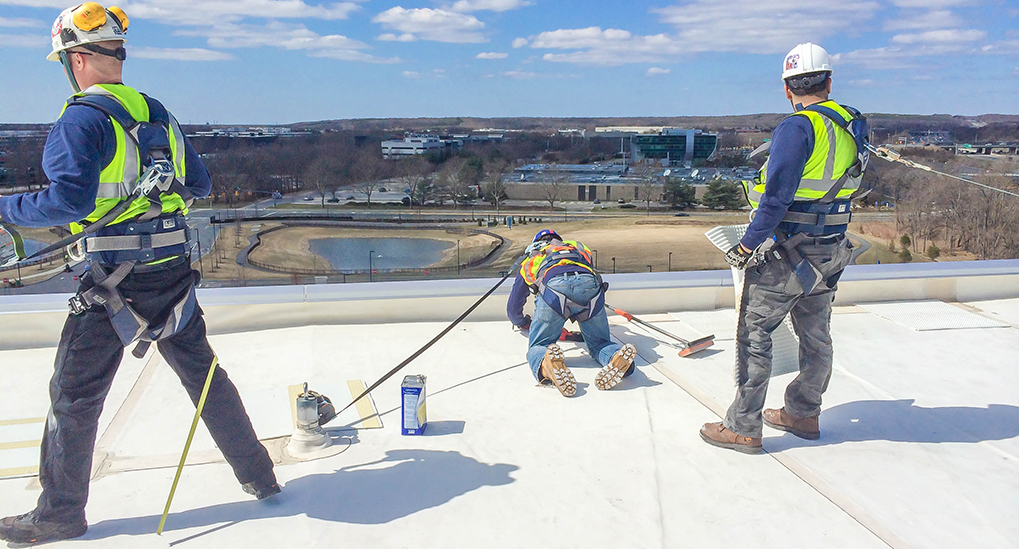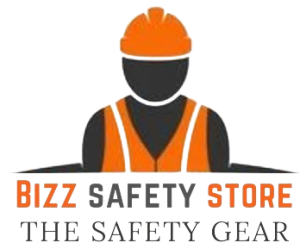FALL PROTECTION & PREVENTION INTRODUCTION:Don’t be fooled into thinking that fall protection and fall prevention are the same things. While used interchangeably, they are both crucial elements that combine to ensure safety in the workplace. You would be excused for thinking that fall protection and fall prevention are the same. After all, they are two terms that are often used interchangeably. Even the OSHA guidelines do it!
They define Fall Protection as “any equipment, device, or system that prevents a worker from falling from an elevation or mitigates the effects of such a fall.” Understanding the difference between these two terms will enable you to create a complete solution that avoids and minimizes the risk of injury from a fall in your work area. The best approach is to have a proactive rather than reactive mindset. What Is Fall Protection?
Fall protection involves providing employees with sufficient safety equipment to minimize the risk of injury in the case of a fall. Fall prevention should always be the number one consideration, but fall protection equipment is necessary in high-risk situations where the risk of falling cannot be
removed. This equipment effectively creates a lifeline system that anchors the worker to a solid object. Examples of Fall Protection
Harness: A full-body harness is an item of “personal” fall arrest protection that has several D rings placed strategically for different purposes. Only the back During is to be used for fall protection. The other D ring attachment positions do not constitute sufficient protection and are instead to aid in work that requires maneuvering, or in a safety rescue situation.
Lanyard: A length of fully flexible rope/strap with secure connectors on either side. It
operates as a deceleration device in the event of a fall. Different versions are available to suit multiple purposes like shock-absorbing to provide a smoother deceleration, with options in synthetic rope or webbing that provide different levels of shock absorption. Lanyards must always be used in their full length and can never be tied to reduce their length as this will severely reduce their effectiveness and strength.
Self-Retracting Lanyard: An SRL eliminates slack by behaving in the same way as a seat post. Slack can be let out or taken up, but in the even to a sudden movement, the device will lock. Anchor Point: This is the secure anchor point for deceleration devices such as lanyards. They can be installed as temporary or permanent
fixtures, but always attached to a solid structure. Permanent anchor points must be designed and installed by a registered professional.
What Is Fall Prevention?
Fall prevention is a category of equipment and structures designed to greatly reduce the chance of a fall occurring. They are a passive measure that protects workers from anun protected edge. While fall protection is hugely important—and the only option in some instances—fall
prevention needs to be the primary concern for plant managers. It is significantly more beneficial for workspace productivity, and safety to proactively implement fall
protection measures than wait for an incident to occur. PWIs experts are available to assist you in creating a fall protection consultation for your work site. Examples of Fall Prevention
Guardrails: As one of the key components in fall prevention, guardrails are installed along all open sides and ends of platforms. A standard system will consist of a toprail, an intermediate (or middle) rail, and a 4” toekick. These are secured to vertical support
posts. Screens, mesh, or balusters can be added to increase security. Guardrails arealsomandated on all scaffolding.
Stairways: If the elevation difference between levels of workismore than 19” and is a regularly traveled path, a stairwayisrequired. It also requires stair rails to be installed as a barrier. Handrail, stair rail, and guard rail systems all need to beprovided. Platforms: Current OSHA standards establish a maximumlimit of 30feet between platforms. The platforms are often used with scaffoldingand fixed ladders. If a ladder is used in excess of 20 feet, a safetycageorwell must be installed. Platforms must be capable of supportingaloadof100 pounds per square foot and needs to be equipped with OSHA- compliant guardrails. Netting: Safety nets shall be installed as close to the underside of thework surface as possible (never more than 25’ below) and only 8” beyond the edge where employees are exposed. Safety nets are onlyrequired when the use of ladders, scaffolds, catch platforms, temporaryfloors, safety lines, or safety belts is impractical. All safety nets will have to undergo impact testing before they areapproved for use.
Harness/lanyard: A harness and lanyard combination are generallyconsidered fall protection equipment, but when a risk of fallingcannotbe eliminated with conventional methods like guardrails, a harnessandlanyard are used. This means that in a situation where no other formof fall preventionissuitable, such as the installation of guard rails or netting, a
harness/lanyard must be used. Lanyard hooks require two actions to open and are self-closing sothehook cannot open accidentally. Another benefit is that the harness—withits multiple attachments—also allows for specialized functions liketravelrestraint, positioning, suspension, and rescue. How Do I Know If I Need Fall Protectionor Prevention?Fall protection is an OSHA requirement for work above 4 feet fromground level ingeneral industry, 5 feet in maritime, and 6 feet in construction. Construction sites dohave some caveats that defer this requirement until: 10 feet above the lower level on scaffolding
15 feet for persons involved in steel erection activities
24 feet on a fixed ladder or rebar assembly
In the construction industry especially, falls are the leading cause of death andsoit’scrucial to implement strict measures and practices to dramatically reduce this risk. Evenfalling from a height of 4-6’ can result in prolonged time away fromwork so it is ineveryone’s interest to take fall protection and prevention seriously. Analyze the Area
The first step in fall protection and prevention comes in an analysis of the hazards inyour job site. Then you can begin to determine what are the best solutions for your site. In many instances, the solutions to reduce the chances of a worker falling are relativelysimple and even inexpensive. The cost is always insignificant when compared withtheconsequences of not having a sufficient fall protection and prevention systeminplace. Either through injury, consequential delays to production, or failing audits, the financial
cost can spiral if you do not take proactive measures. Let Us Help;
PWI has years of experience in designing, fabricating, and installing fall preventionandprotection systems for manufacturers across the United States. With our broadunderstanding of all different working environments, we can help create the best
solution for your specific needs. What is a Fall Restraint System?
A fall restraint system is built to prevent a fall from occurring, but workers have toactively engage with the system by tying themselves to an anchor and using a lanyardshort enough to prevent them from falling off an edge. What is a Fall Arrest System?
While active and passive restraint systems could be categorized as fall prevention, afall
arrest system is fall protection. It’s a system that minimizes the chance and severityof
injury once a worker does fall. In terms of equipment, fall restraint and fall arrest systems typically have a lot incommon. Since workers have to tie into the system, they’re considered active fall
protection systems. And they’re “systems” because they require multiple components–at least one anchor, a connector (lanyard), and body support (like a harness), at
minimum. The difference is that a fall restraint system has a short connector with an adjustablelength, while a fall arrest system’s connector is typically longer. It also must be abletoabsorb the force of the worker’s weight combined with the speed of the fall. Additionally, a fall arrest system needs an extra component for self-rescue or assisted rescue, sothat
they can descend safely.

